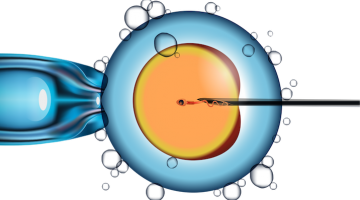eSET
An Elective Single Embryo Transfer (eSET) is the practice of transferring only one embryo into a woman’s uterus. This offers a reduced chance of multiples while maintaining a very similar rate of pregnancy. Due to the reduced risk of an eSET along with having a very similar rate of pregnancy, eSET has quickly become the gold standard practice of transferring embryos with an IVF procedure.
Understanding the Reasoning for ESET
There was a time in its infancy where reproductive endocrinologists and other fertility specialists would routinely transfer multiple embryos. This practice was largely due to the uncertainty of individual embryo health and their ability to implant. By transferring multiple embryos, clinics were able to “improve,” their success rates and boast superiority over other clinics. This outdated practice has developed some unwarranted “fear,” as people often think that if they do IVF that they will automatically have twins or in rare cases even higher number of multiples.
Today, with improved embryology and medical techniques, it is not only unnecessary but unsafe and at times unethical to transfer multiple embryos when a client has a good prognosis for success. This does not mean that multiple embryos are not transferred, it simply means that each case at CNY Fertility is treated individually.
Why ESET
Same Success Rates
Many would think that transferring more embryos = higher odds of success. This is untrue for many reasons. First, it is believed that lower quality embryos may interfere with the implantation of a healthy embryo causing the failure of both embryos to implant. Additionally, transferring only one embryo means that there are more embryos left over for a Frozen Embryo Transfer should the first transfer fail (or after successfully giving birth). Pro tip!
Lower Gestational Risk
There is a substantial risk associated with multiple pregnancies. The risks of multiples during gestation and birth include but are not limited to: Miscarriage, Premature birth, Bleeding, Prolonged bed rest, Preeclampsia, Gestational diabetes, Pregnancy-induced hypertension, Increased need for cesarean section, Postpartum depression, Growth of all fetuses, Developmental disabilities, Cerebral palsy, Infant mortality rates.
ASRM recommends a single embryo transfer in all patients under 38 years of age as well as all PGT euploid embryos. CNY uses these guidelines, along with your history to suggest single embryo transfers when appropriate.
How It Works
The ESET Process
Because an elective single embryo transfer is just a fancy name for IVF in which one embryo is transferred, please refer to that page for more information.


